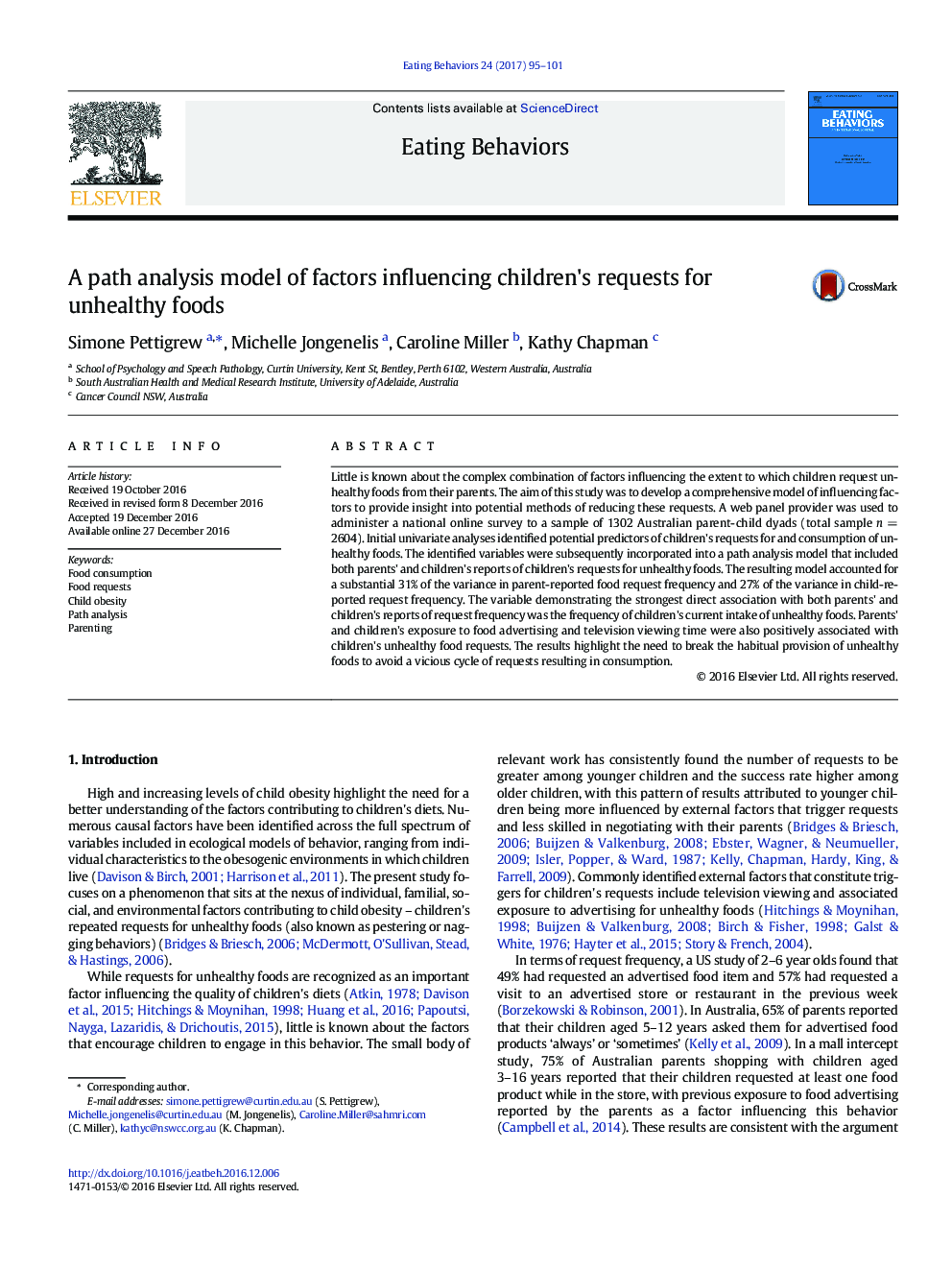| Article ID | Journal | Published Year | Pages | File Type |
|---|---|---|---|---|
| 5038762 | Eating Behaviors | 2017 | 7 Pages |
â¢Parent and child data were used to develop a model of children's food requests.â¢1302 parent child dyads (n = 2604 respondents) participated in the study.â¢The model accounted for 27%-31% of variance in reported request frequency.â¢Parents need assistance in withstanding children's requests for unhealthy foods.â¢Greater regulation of advertising may reduce children's food request behaviors.
Little is known about the complex combination of factors influencing the extent to which children request unhealthy foods from their parents. The aim of this study was to develop a comprehensive model of influencing factors to provide insight into potential methods of reducing these requests. A web panel provider was used to administer a national online survey to a sample of 1302 Australian parent-child dyads (total sample n = 2604). Initial univariate analyses identified potential predictors of children's requests for and consumption of unhealthy foods. The identified variables were subsequently incorporated into a path analysis model that included both parents' and children's reports of children's requests for unhealthy foods. The resulting model accounted for a substantial 31% of the variance in parent-reported food request frequency and 27% of the variance in child-reported request frequency. The variable demonstrating the strongest direct association with both parents' and children's reports of request frequency was the frequency of children's current intake of unhealthy foods. Parents' and children's exposure to food advertising and television viewing time were also positively associated with children's unhealthy food requests. The results highlight the need to break the habitual provision of unhealthy foods to avoid a vicious cycle of requests resulting in consumption.
